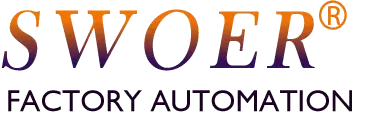- When Part Orientation is Extremely Complex or Mechanically Unreliable
- Scenario: The differences between front/back sides or specific angles are very subtle, or the shape is highly irregular. Traditional mechanical tooling cannot achieve near-100% correct orientation.
- Solution: The camera can precisely identify subtle features and trigger a mechanism to reorient the part.
- When 100% Online Quality Inspection is Required
- Scenario: There is a need to inspect parts for defects during feeding, such as:
- Dimensional Defects: Incorrect diameter, out-of-spec length.
- Cosmetic Defects: Scratches, dents, burrs, corrosion.
- Assembly Completeness: Missing washers on screws, short shots in molded parts.
- Mixed Parts Detection: Incorrect part models mixed in.
- Solution: The vision system compares each part to a master “golden template” and triggers a reject mechanism for any failures.
- When Precise Positioning for a Robot is Needed
- Scenario: A downstream robot needs to pick parts for precise assembly but cannot determine the part’s exact position and rotation.
- Solution: The camera captures an image as the part arrives, calculates its precise coordinates and angle, and sends this data to the robot to guide accurate picking.
- When Product Changeover is Frequent and Physical Tuning is Undesirable
- Scenario: The production line frequently handles different parts. Customizing and tuning mechanical tooling for each part is costly and time-consuming.
- Solution: A “Flexible Feeder + Vision” system allows for quick changeover by simply loading a new vision program, drastically reducing setup time.
In summary, adding a camera to your vibratory bowl is a strategic upgrade for enhancing intelligence and solving core challenges related to orientation, quality inspection, robot integration, or frequent changeovers.
